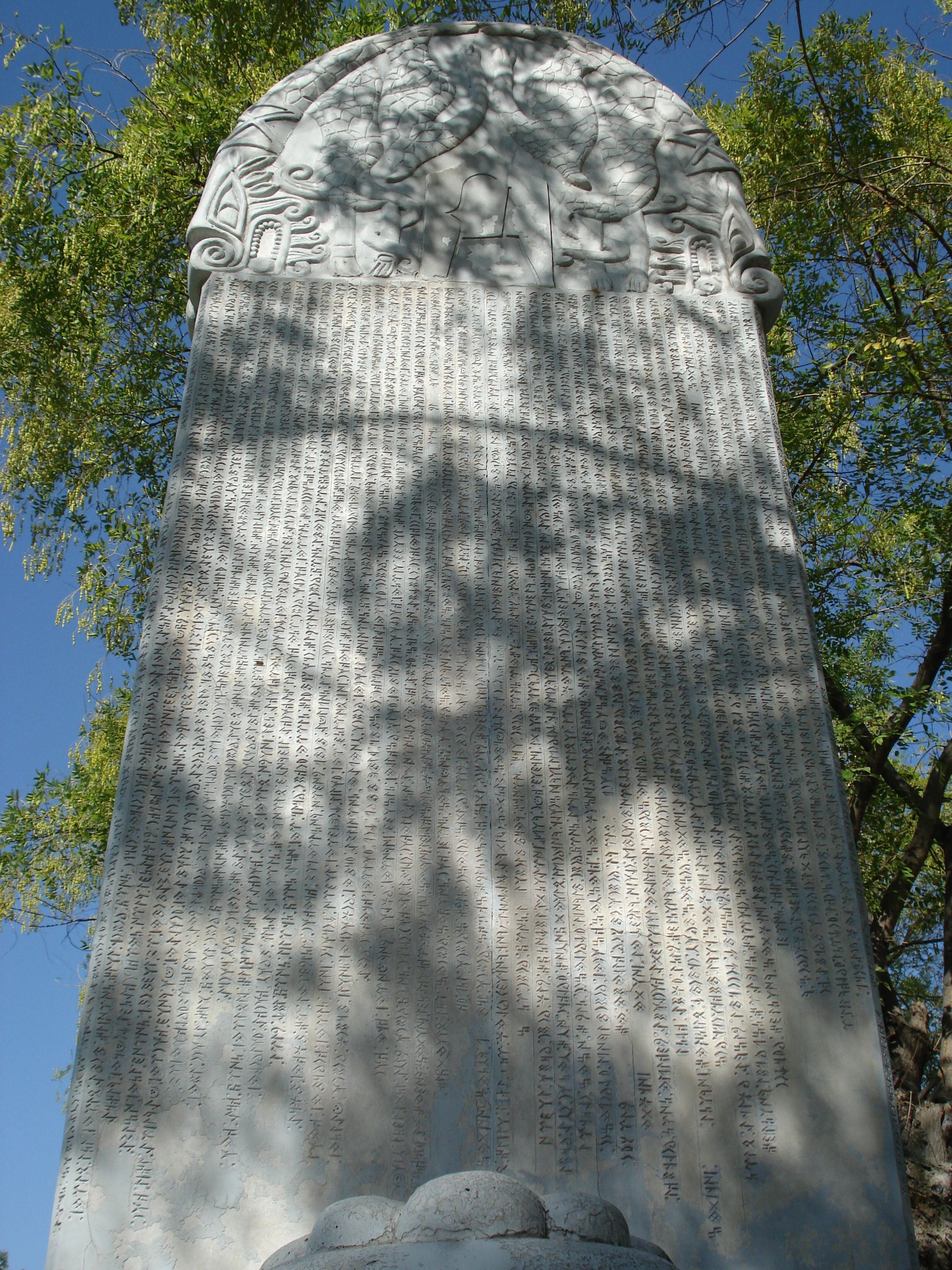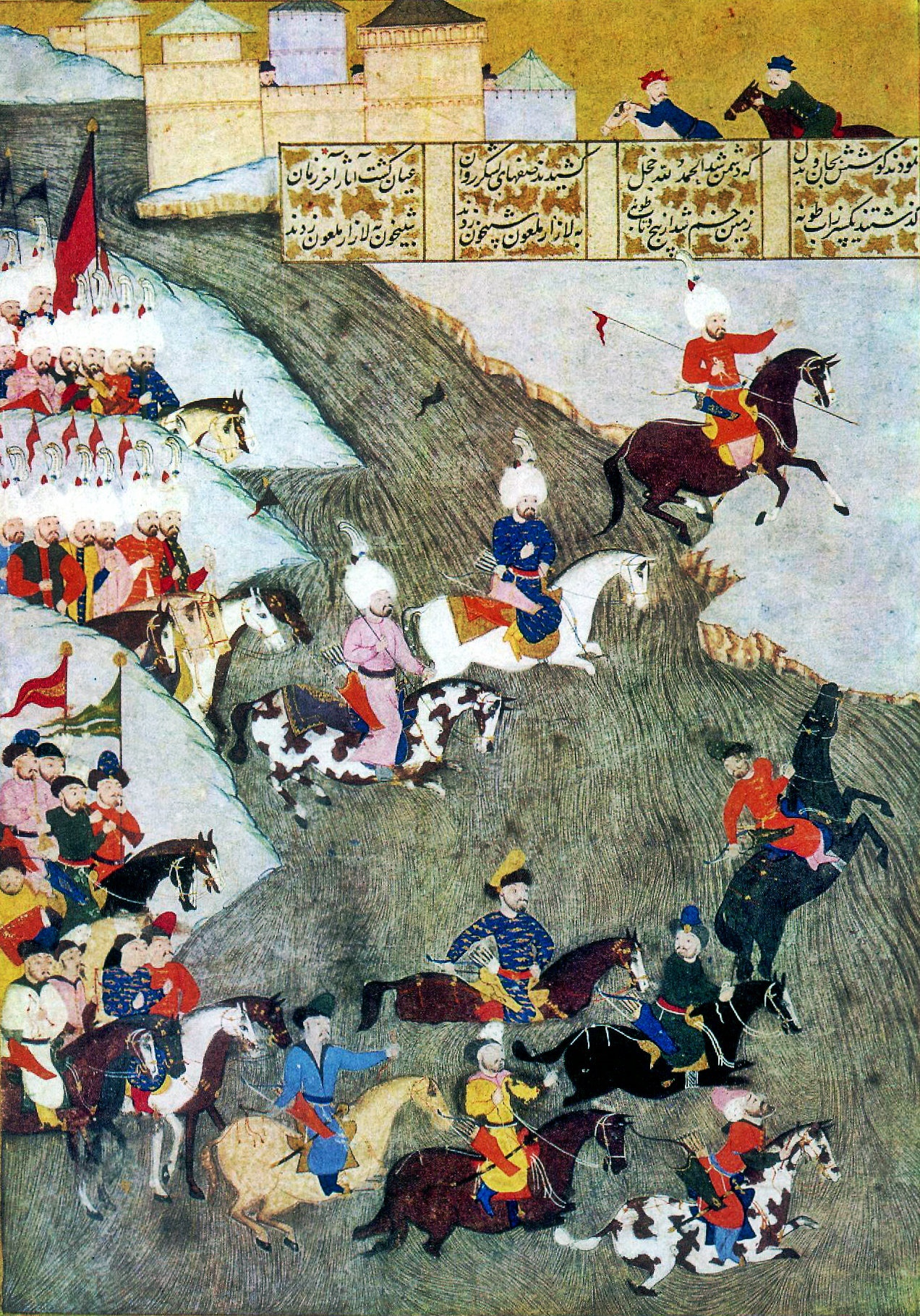|
Kruszyniany
Kruszyniany ( Polish Arabic: كروـشـنيانِ) is a village in the administrative district of Gmina Krynki, within Sokółka County, Podlaskie Voivodeship, in north-eastern Poland, close to the border with Belarus. The village has a population of 160. In the past, it was primarily a Lipka Tatar settlement. Up until this day, the Tatars still remain as the only minority in the village.Leonard Drożdżewicz, Biographical Dictionary of Polish Tatars of the Twentieth Century, „Znad Wilii”, nr 4 (68) z 2016 r., p. 77-82 http://www.znadwiliiwilno.lt/wp-content/uploads/2020/04/Znad-Wilii-68.pdf The Tatars are Sunni Muslims. Sites of interest in the village include a wooden mosque from the 18th century (one of the two oldest in Poland), a Muslim cemetery, a Tatar centre and museum, and an Eastern Orthodox cemetery with an Orthodox church. Around 1683, the Lipka Tatars were given land in Kruszyniany as a reward for aiding Jan III Sobieski in the Battle of Vienna and s ... [...More Info...] [...Related Items...] OR: [Wikipedia] [Google] [Baidu] |
Kruszyniany Mosque
Kruszyniany Mosque is a wooden mosque located in the village of Kruszyniany, in Podlaskie Voivodeship, Poland. The building is the oldest Lipka Tatar mosque in Poland, built on the plan of a rectangle, in specifications of 10 by 13 metres. History The village of Kruszyniany was assigned by King John III Sobieski to the Tatars who had participated on the side of the Polish–Lithuanian Commonwealth in the war against the Ottoman Empire. After the Lipka Tatar populace settled in the area, the Tatars built the mosque, which was first mentioned in a document dating back to 1717. The present mosque was most likely built in the second half of the eighteenth-century, or in the first half of the nineteenth-century (the exact date of construction of the building is unknown), on the site of the former mosque. In 1846, the building underwent renovation, information about which is found on a stone plaque, next to the women's entrance. After World War II, the area was settled by ... [...More Info...] [...Related Items...] OR: [Wikipedia] [Google] [Baidu] |
Lipka Tatars
The Lipka Tatars (Lipka – refers to '' Lithuania'', also known as Lithuanian Tatars; later also – Polish Tatars, Polish-Lithuanian Tatars, ''Lipkowie'', ''Lipcani'', ''Muślimi'', ''Lietuvos totoriai'') are a Turkic ethnic group who originally settled in the Grand Duchy of Lithuania at the beginning of the 14th century. The first Tatar settlers tried to preserve their shamanistic religion and sought asylum amongst the non-Christian Lithuanians.Lietuvos totoriai ir jų šventoji knyga - Koranas Towards the end of the 14th century, another wave of Tatars – this time, , were invited into the Grand Duchy by [...More Info...] [...Related Items...] OR: [Wikipedia] [Google] [Baidu] |
Podlaskie Voivodeship
Podlaskie Voivodeship or Podlasie Province ( pl, Województwo podlaskie, ) is a voivodeship (province) in northeastern Poland. The name of the province and its territory correspond to the historic region of Podlachia. The capital and largest city is Białystok. It borders on Masovian Voivodeship to the west, Warmian-Masurian Voivodeship to the northwest, Lublin Voivodeship to the south, the Belarusian oblasts of Grodno and Brest to the east, the Lithuanian Counties of Alytus and Marijampolė to the northeast, and the Kaliningrad Oblast of Russia to the north. The province was created on 1 January 1999, pursuant to the Polish local government reforms adopted in 1998, from the former Białystok and Łomża Voivodeships and the eastern half of the former Suwałki Voivodeship. Etymology The voivodeship takes its name from the historic region of Poland called ''Podlasie'', or in Latin known as Podlachia. There are two opinions regarding the origin of the region's name. P ... [...More Info...] [...Related Items...] OR: [Wikipedia] [Google] [Baidu] |
Tatarian Cemetery Kruszyniany Poland
The Tatars ()Tatar in the Collins English Dictionary is an umbrella term for different Turkic peoples, Turkic ethnic groups bearing the name "Tatar". Initially, the ethnonym ''Tatar'' possibly referred to the Tatar confederation. That confederation was eventually incorporated into the Mongol Empire when Genghis Khan unified the various steppe tribes. Historically, the term ''Tatars'' (or ''Tartary, Tartars'') was Endonym and exonym, applied to anyone originating from the vast North Asia, Northern and Central Asian landmass then known as Tartary, a term which was also conflated with the Mongol Empire itself. More recently, however, the term has come to refer more narrowly to related ethnic groups who refer to themselves as ''Tatars'' or who speak languages that are co ... [...More Info...] [...Related Items...] OR: [Wikipedia] [Google] [Baidu] |
Pomnik Historii
Historic Monument ( pl, pomnik historii) is one of several categories of objects of cultural heritage (in the singular, ''zabytek'') in Poland. To be recognized as a Polish historic monument, an object must be declared such by the President of Poland. The term "historic monument" was introduced into Polish law in 1990, and the first Historic Monuments were declared by President Lech Wałęsa in 1994. List The National Heritage Board of Poland The National Institute of Cultural Heritage of Poland ( pl, Narodowy Instytut Dziedzictwa NID) is a Polish governmental institution responsible for documenting cultural property and the intangible cultural heritage, as well as for supporting and ... maintains the official list. References {{reflist Objects of cultural heritage in Poland Law of Poland ... [...More Info...] [...Related Items...] OR: [Wikipedia] [Google] [Baidu] |
List Of Historical Monuments (Poland)
Historic Monument ( pl, pomnik historii) is one of several categories of objects of cultural heritage in Poland, objects of cultural heritage (in the singular, ''zabytek'') in Poland. To be recognized as a Polish historic monument, an object must be declared such by the President of Poland. The term "historic monument" was introduced into Polish law in 1990, and the first Historic Monuments were declared by President Lech Wałęsa in 1994. List The National Heritage Board of Poland maintains the official list. References {{reflist Objects of cultural heritage in Poland Law of Poland ... [...More Info...] [...Related Items...] OR: [Wikipedia] [Google] [Baidu] |
Tatar
The Tatars ()Tatar in the Collins English Dictionary is an umbrella term for different ethnic groups bearing the name "Tatar". Initially, the ethnonym ''Tatar'' possibly referred to the Tatar confederation. That confederation was eventually incorporated into the when unified the various s ... [...More Info...] [...Related Items...] OR: [Wikipedia] [Google] [Baidu] |
Gmina Krynki
__NOTOC__ Gmina Krynki is an urban-rural gmina (administrative district) in Sokółka County, Podlaskie Voivodeship, in north-eastern Poland, on the border with Belarus. Its seat is the town of Krynki, which lies approximately south-east of Sokółka and east of the regional capital Białystok. (Krynki gained town status on 1 January 2009 – prior to that the district was classed as a rural gmina.) The gmina covers an area of , and as of 2006 its total population is 3,423, out of which the population of Krynki is 2,709. The gmina contains part of the protected area called Knyszyń Forest Landscape Park. Villages Apart from the town of Krynki, the gmina contains the villages and settlements of Aleksandrówka, Białogorce, Borsukowizna, Chłodne Włóki, Ciumicze, Górany, Górka, Jamasze, Jurowlany, Kłyszawka, Kruszyniany, Kundzicze, Łapicze, Leszczany, Łosiniany, Nietupa, Nietupa-Kolonia, Nietupskie, Nowa Grzybowszczyzna, Nowa Świdziałówka, Ostrów Po� ... [...More Info...] [...Related Items...] OR: [Wikipedia] [Google] [Baidu] |
John III Sobieski
John III Sobieski ( pl, Jan III Sobieski; lt, Jonas III Sobieskis; la, Ioannes III Sobiscius; 17 August 1629 – 17 June 1696) was King of Poland and Grand Duke of Lithuania from 1674 until his death in 1696. Born into Polish nobility, Sobieski was educated at the Jagiellonian University and toured Europe in his youth. As a soldier and later commander, he fought in the Khmelnytsky Uprising, the Russo-Polish War and during the Swedish invasion known as the Deluge. Sobieski demonstrated his military prowess during the war against the Ottoman Empire and established himself as a leading figure in Poland and Lithuania. In 1674, he was elected monarch of the Polish–Lithuanian Commonwealth following the sudden and unexpected death of King Michael. Sobieski's 22-year reign marked a period of the Commonwealth's stabilization, much needed after the turmoil of previous conflicts. Popular among his subjects, he was an able military leader, most famous for his victory over the Turks ... [...More Info...] [...Related Items...] OR: [Wikipedia] [Google] [Baidu] |
Voivodeships Of Poland
A voivodeship (; pl, województwo ; plural: ) is the highest-level administrative division of Poland, corresponding to a province in many other countries. The term has been in use since the 14th century and is commonly translated into English as "province". The administrative divisions of Poland, Polish local government reforms adopted in 1998, which went into effect on 1 January 1999, created sixteen new voivodeships. These replaced the 49 subdivisions of the Polish People's Republic, former voivodeships that had existed from 1 July 1975, and bear a greater resemblance (in territory, but not in name) to the voivodeships that existed between 1950 and 1975. Today's voivodeships are mostly named after historical and geographical regions, while those prior to 1998 generally took their names from the cities on which they were centered. The new units range in area from under (Opole Voivodeship) to over (Masovian Voivodeship), and in population from nearly one million (Opole Voivodes ... [...More Info...] [...Related Items...] OR: [Wikipedia] [Google] [Baidu] |
Narodowy Instytut Dziedzictwa
The National Institute of Cultural Heritage of Poland ( pl, Narodowy Instytut Dziedzictwa NID) is a Polish governmental institution responsible for documenting cultural property and the intangible cultural heritage, as well as for supporting and coordinating their protection."National Institute of Cultural Heritage" English-language websiteNarodowy Instytut Dziedzictwa, "O NID" ("About NID") Heritage lists The Institute coordinates at the national level the Registry of Cultural Property lists, maintained at the regional level by the voivodeship offices for cultural property protection (''wojewódzkie urzędy ochrony zabytów'') according to the ''Ordinance No 32'' of ...[...More Info...] [...Related Items...] OR: [Wikipedia] [Google] [Baidu] |







